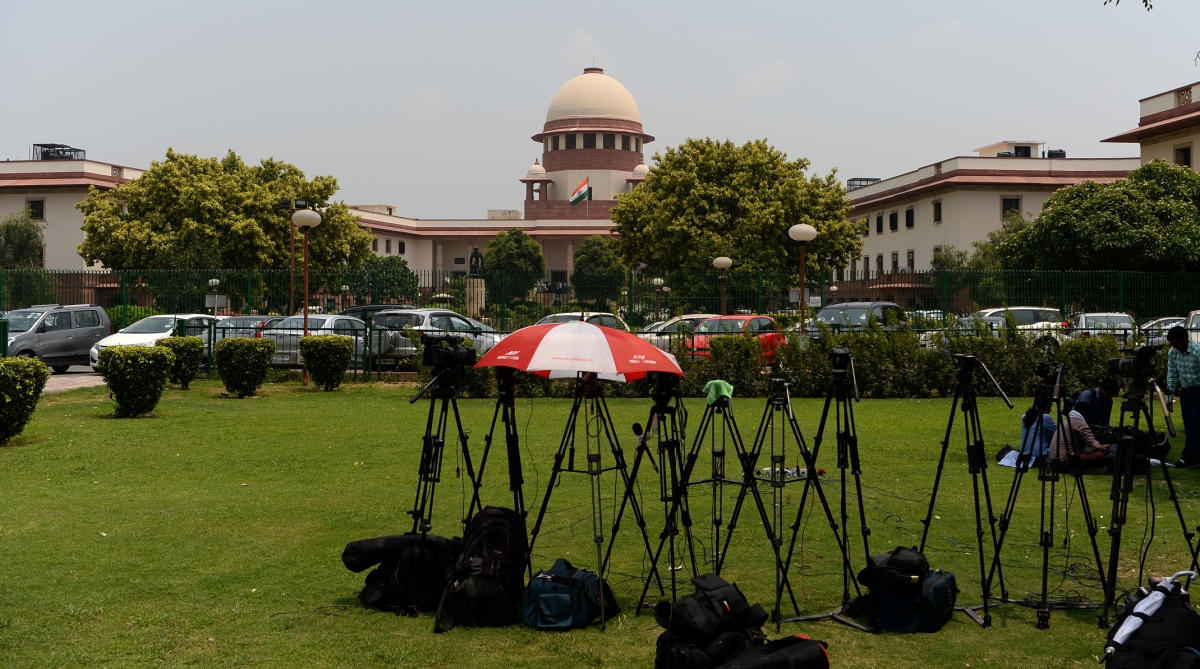India’s Got Latent: SC issues notice on YouTuber Ashish Chanchlani’s plea against FIRs
SC issues notice on YouTuber Ashish Chanchlani’s plea to quash or transfer FIR in India’s Got Latent case; tagged with Ranveer Allahabadia’s petition.
The Supreme Court on Friday was told that just as the statue of Bamiyan Buddha was destroyed by the Afghan Taliban, similarly the Hindu Taliban razed the Babri Masjid in Ayodhya on December 6, 1992.

(Photo: AFP PHOTO / Sajjad HUSSAIN)
The Supreme Court on Friday was told that just as the statue of Bamiyan Buddha was destroyed by the Afghan Taliban, similarly the “Hindu Taliban” razed the Babri Masjid in Ayodhya on December 6, 1992.
“Just as Bamiyan Buddha was destroyed by Afghan Taliban, same way Babri Masjid was destroyed by Hindu Taliban,” the bench of Chief Justice Dipak Misra, Justice Ashok Bhushan and Justice S. Abdul Nazeer was told by senior counsel Rajeev Dhavan.
Advertisement
“No faith has a right to destroy a mosque,” Dhavan said, assailing the argument by the Hindu side that no equity survived once the mosque had gone (razed).
Advertisement
“It can’t be, should not be argued that no equity lies and there is nothing left to be decided once it (mosque) has been destroyed,” Dhavan told the bench.
Dhavan said this to the three-judge bench while advancing arguments that the 1994 top court judgment that had said that offering namaz in a mosque was not an essential practice of Islam needed to be revisited.
“The question of essential practice was totally alien to the case before the top court bench in 1994,” he said.
Appearing for the lead petitioner M Siddiqui represented by his legal heir, Dhavan assailed the Uttar Pradesh government for abandoning its neutrality and pointing fingers at Muslim litigants for making “belated efforts” seeking a relook at the 1994 Ismail Farooqui judgment that had said that mosques were not an integral part of religious practice of offering prayers.
He told the court that the neutrality had been broken by the Uttar Pradesh government which was represented by the Additional Solicitor General – a law officer of the Central government which is the receiver of the disputed land.
Describing the shift in the stand of the Uttar Pradesh government as a “breach of faith”, Dhavan said that there was no delay on the part of the Muslim litigants in flagging the issue and they did it in the first instance when the opportunity arose.
It were the Hindu litigants who had relied upon the 1994 judgment during the hearing of the title suit of the disputed site before the Lucknow bench of Allahabad High Court.
The senior counsel took exception to senior counsel K. Parasaran telling the court on May 17 that for Muslims “Makkah and Madinah alone are places of particular significance” as pilgrimage centres but such was not the case with Ayodhya/Babri Masjid.
Describing it as invidious argument, Dhavan said this meant that for the Muslims and Christians, their centre of pilgrimages were overseas and thousands of churches and mosques could be closed.
This also amounted to saying that Hindus were protected by the Article 25 of the constitution but not the Muslims and Christians and “We (the Hindus) are superior and everything belongs to us”.
Dhavan described as an indulgent act of “charity” the offer by the Shia Waqf Board to move out of the disputed site in return for a site for a new mosque.
He said the 1994 judgment needed to be revisited as the Lucknow bench of Allahabad High Court relied on this in deciding the Ayodhya title suit by which the disputed 2.77 acres site was ordered to be divided between the Nirmohi Akhara, the Lord Ram deity and the Sunni Waqf Board.
The top court is hearing a batch of cross petitions challenging the 2010 Allahabad High Court judgment by which it had divided the disputed 2.77 acres site between the Nirmohi Akhara, the Lord Ram deity and the Sunni Waqf Board.
Advertisement